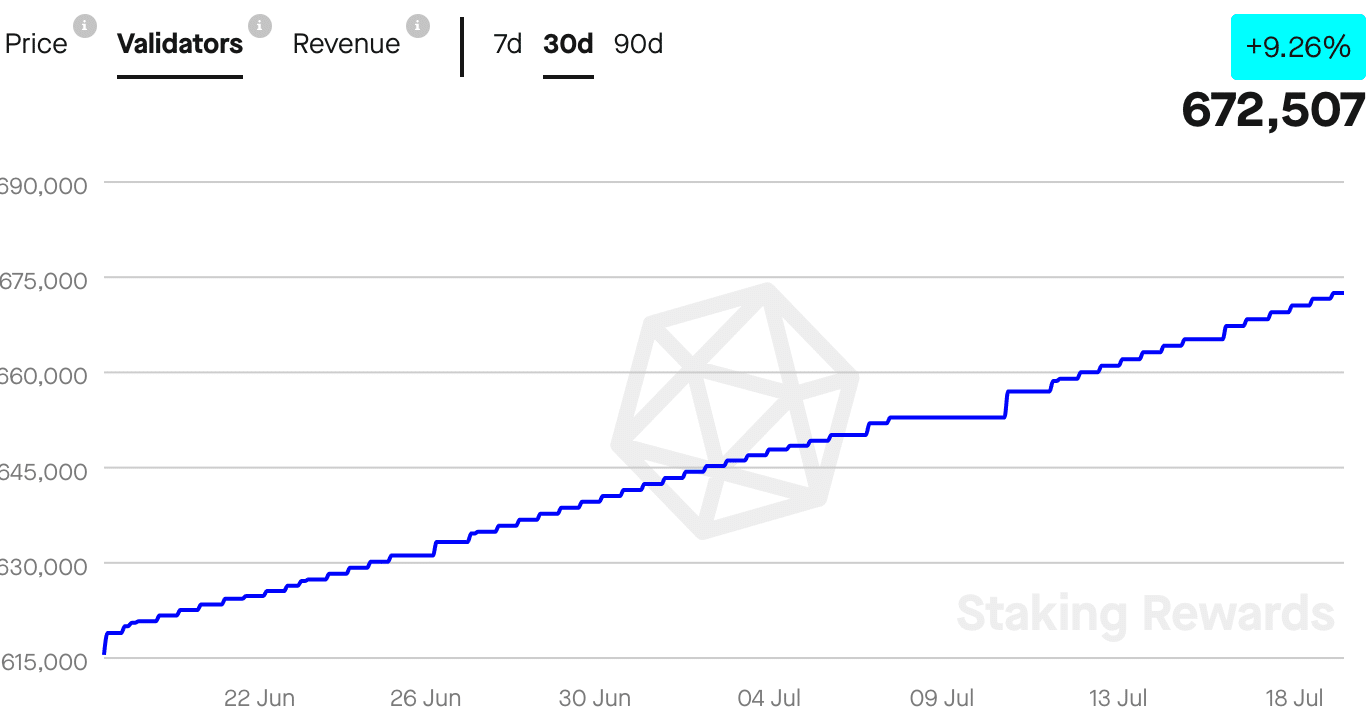Important Developments Continue on Ethereum: What Should Investors Do?
Contents
Updated: July 18, 2023 at 09:54 PM UTC
- Despite market fluctuations, Ethereum’s progress has continued as planned, with the protocol actively following future developments.
- Ethereum aims to avoid a large set of validators to not put pressure on the peer-to-peer network layer.
- Currently, there are 672,507 validators on the Ethereum network, a 9.26% increase in the past month.
Despite the volatility in the cryptocurrency market, developments on the Ethereum network are progressing as planned. What’s next?
Development Plans on Ethereum are Advancing

In the past quarter, Ethereum experienced significant volatility due to various events in the crypto sector. However, despite market fluctuations, Ethereum’s progress has continued as planned, with the protocol actively following future developments.
In a recent developers’ meeting, developers discussed the possibility of reducing the validator churn limit, which determines the rate at which validators join or exit the Beacon Chain. The aim was to slow down the growth rate of the validator set size and implement the change in a timely manner for the Deneb/Cancun (Dencun) upgrade, to avoid putting pressure on the peer-to-peer network layer.
Ethereum aims to avoid a large set of validators to not complicate the implementation of future code changes.
The proposed solution by developers is to limit 12 validator entries and exits per epoch. This limitation will effectively slow down the growth rate of the validator set and provide more time to explore other ideas for managing long-term growth of the validator set. The proposed change is considered a temporary measure while more advanced solutions are developed.
Currently, there are 672,507 validators on the Ethereum network, a 9.26% increase in the past month. While validators show optimism towards Ethereum, the situation for ETH may worsen in the future.
What Should Buyers and Sellers Do?
According to data, cryptocurrencies have experienced a V-shaped market. This was observed as ETH initially dropped below $1,875 but quickly recovered and maintained its value during Asian trading hours. Surprisingly, the options market did not show significant reactions to these movements.
In previous market analyses, Greekslive noted that the crypto market has lost liquidity and become vulnerable to sudden spikes and V-shaped movements. Even small momentum can lead to widespread price changes.
According to their analysis, sellers in the current market should prioritize static protection and have a risk control plan to hold options until expiration. On the other hand, buyers should take profits quickly and consider using futures to dynamically hedge their options, which can be a more favorable approach.

Gideon Wolf
Comments
Yorumlar
Other Articles
BitMine Boosts Ethereum Stake to 461K ETH, Eyes Network Share Growth
January 1, 2026 at 08:06 PM UTC
Ethereum On-Chain Strength Hints at Potential L1 Season in 2026
January 1, 2026 at 10:20 AM UTC
Bitwise Files for 11 Altcoin ETFs Including AAVE, UNI Amid SOL, XRP Muted Gains
December 31, 2025 at 08:47 PM UTC

